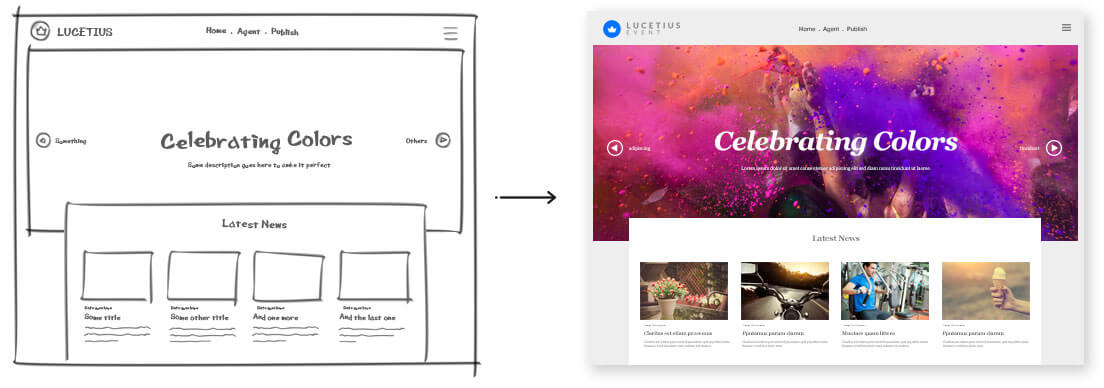Lucky for us, thousands of our Artbees users are well-seasoned web designers and digital marketing specialists who each have hundreds of clients under their belt at this point. We’ve interviewed these thought leaders in web design such as Travis Bennett, Tom Heinkle, Michael Hahn, and other web designers and experts to show you the best practices in delivering websites that agree perfectly with clients.
All of the leading web designers agree on the importance of communication with your clients before breaking ground on any website project. Your first meeting will save both of your time and ensure a smooth working relationship with your client. You can conduct the consultation personally, video call, or by email correspondence. Thanks to technology, you can gain clients from any part of the world.
Here are some words of advice from experts on how to approach your client:
-
Help your clients materialize their vision.
Start building from what your clients have in mind. Show your expertise by presenting how you can reach their dream website. Design their website with the end in mind; based on what they want to achieve through their website.
Do not come to your clients assuming that you have all the answers without even consulting them. The secret to making your customers happy is to do what they want, so it is important to ask the right questions to understand just that.
-
Make it easy for your clients.
Your clients are seeking out your help because their hands are already full doing other tasks to grow their businesses. So, don’t make it any harder for them. Design a website that is easy for them to understand and maintain. That may come in the form of a one to one tutorial where you show them how to use the ropes, or you can even offer a pre-prepared video that provides instruction on how to make modifications.
If the client would just rather keep you in the driver’s seat, you can offer packages for monthly or quarterly services to complete all updates or changes in the website content. Either way, make sure you know your client’s expectation in this matter.
-
Have a point of comparison handy.
You need to compare website looks and styles to let your clients have clearer visions of what they want to achieve. You can research about their competition to see what makes their business stand out and capitalize on it when designing their website.
It will also be easier to arrive at your clients’ ideal website when you let them show you examples of websites they love or hate. It will give you a clearer path on what elements to include or avoid when building their website.
-
Dispel your client’s worst fears.
If your client opts to learn more about how to change their own website, it’s your job to empower your client with confidence to run their website by teaching them basic skills in editing and updating their website.
It will eventually save both of you time since they can do minor edits without needing your help. Using pre-set themes that are easy to edit but difficult to damage will give great relief to your clients since they can play around to learn without accidentally breaking the website.
-
Quickly get to the point.
Most of your clients might not be so tech-savvy, so in the interest of having mutual understanding, keep in mind that you don’t need to get hung up explaining the technical features, plugins and processes you’ll be taking. Rather, present to your clients the web components that can be used to achieve their website goals; don’t forget though, it’s their website—let them have the final verdict on which ones to include.
[call_to_action title=”Give your work a boost with a huge library of design elements from our partner GraphicRiver.” target=”_blank” url=”https://1.envato.market/c/1239055/275988/4415?u=https%3A%2F%2Fgraphicriver.net%2F” type=”link”]
Final Word
Before your first client meet-up, prepare your questions ahead of time so that your meeting will be as productive as possible. You can create a Google Form so you can send the link to your clients and they can quickly answer you! Check out our Google Form here.
“We’ve rounded up the critical questions that you need, to have all the details from the client ready before you even begin your conceptualization phase.”





No comment yet, add your voice below!